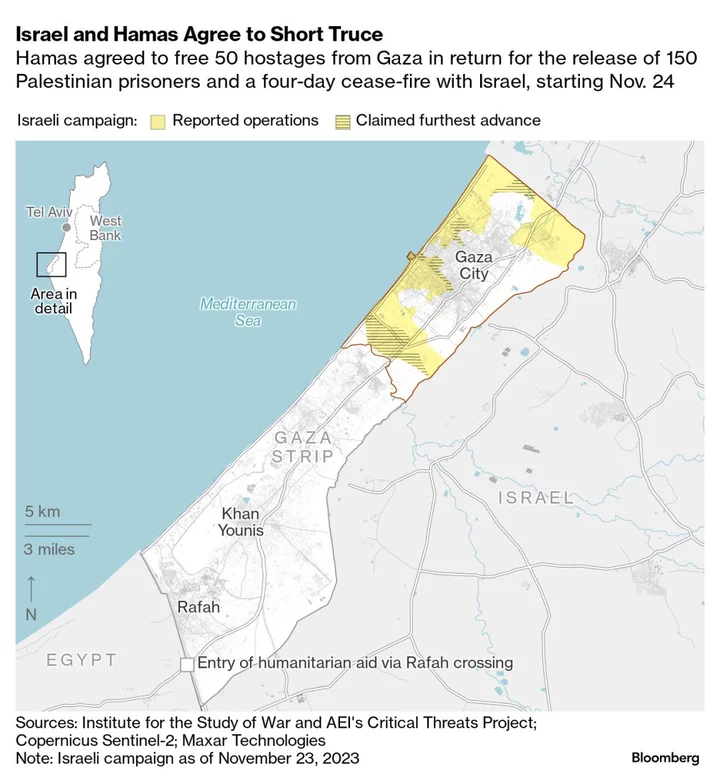Shares of US regional banks rallied in premarket trading after Western Alliance Bancorp said deposits had grown by more than $2 billion since the quarter’s end, easing worries about the health of US regional lenders.
Shares of Western Alliance were 9.7% higher in premarket trading as of 7 a.m. in New York. Regional lending peer PacWest Bancorp gained 9% and Zions Bancorp was 2.3% higher, as the SPDR S&P Regional Banking ETF rose 1.5%. The sector has been under pressure since March, when a series of firms including Silicon Valley Bank collapsed.
“The continuous operational updates over the past two months, coupled with yesterday’s brief dive into core-deposit segment trends, gives us solace that not only will WAL weather the storm, but we find it to be notably better positioned than most peer banks,” Hovde Group analyst Ben Gerlinger, who holds an outperform rating on the stock, wrote in a note to clients.
The lender had previously reported that deposit levels had increased $1.8 billion from the end of the prior quarter to $49.4 billion as of May 9. Its latest figures indicate deposit levels increased by another $200 million between May 9 and May 12.
Western Alliance was one of the regional banks initially swept up in the turmoil that followed the collapse of other lenders earlier this year, with investors concerned about unrealized losses on bond investments and deposit levels. Exposure to commercial real estate lending has also been in focus.
Read More: Dip Buyers Scorched by Cratering Bank Stocks Rush for the Exits
Concerns over the financial health of the lenders has hit the KBW Regional Banking Index, which had declined 32% this year through Tuesday. The collapse of First Republic Bank at the beginning of this month had reignited worries over the group, and sector gauges haven’t been able to recover since the March plunge.
Western Alliance, however, has demonstrated “stability amid an uncertain operating backdrop,” Bloomberg Intelligence analysts Herman Chan and Sergio Ferreira wrote in a note. “We see the bank as well positioned, with $22.6 billion in available liquidity and only about $10 billion in uninsured deposits.”
(Updates share moves, adds additional context, charts and analyst commentary.)
Author: Macarena Muñoz and Bre Bradham









